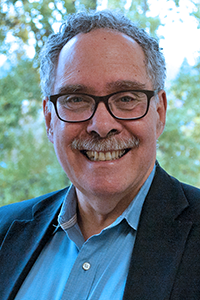Washington is considered a national leader in efforts to reduce prescription drug overdose, thanks in part to changes in opioid prescribing practices championed by Dr. Gary Franklin.
Franklin is a research professor in the UW Department of Environmental & Occupational Health Sciences and medical director for the state Department of Labor & Industries.
UW’s annual Worker Memorial Day event
Wednesday, April 24 at 11:30 am
UW Husky Union Building, North Ballroom
The event is free, and no registration is required. Can’t attend in person? Like us on Facebook, then tune in to Facebook Live to watch the event.
On Wednesday, April 24, Franklin will be the keynote speaker at the UW’s annual Worker Memorial Day event honoring workers who died from workplace injuries or illnesses in King County.
We talked with Franklin about his groundbreaking opioid research and why collaboration is key to stemming the tide of opioid addiction.
The opioid epidemic seems intractable, yet the title of your talk―“Reversing the adverse impact of opioids on injured workers”―sounds optimistic. Is it possible to reverse the trend?
We have reversed the trend. In Washington, we’ve seen a 60 percent decline in deaths related to prescription opioids thanks to a number of new, collaboratively developed approaches.
The mid- to late 2000s were the heyday of overly permissive prescribing. Our research found that a worker getting at least two opioid prescriptions or more than a week’s supply in the first six weeks after injury doubled their risk of being disabled a year later.
Opioids alone―even apart from the injury―led many workers to become disabled.
So we devised new state workers’ compensation rules that said if you get opioids for an injury and your pain and function isn’t better after six weeks, we would stop covering further opioid prescriptions.

Between 2007 and 2017, the number of workers who got at least one opioid prescription and went on to long-term opioid use dropped from 7.5 percent to less than 1 percent.
You’ve looked closely at the way doctors prescribe opioids. What have you learned?
For a long time, it was framed as a patient abuse issue. The truth is that opioids were being falsely marketed by drug companies as safe and unlikely to cause addiction.
Doctors were taught a lot of falsehoods, like there’s no ceiling on the dose or that the way to treat drug tolerance is to increase the dose. It made doctors more comfortable than they should have been in overprescribing opioids for routine pain.
What changed in Washington to so sharply reduce the number of overdose deaths from prescription opioids?
In 2005, we reported the nation’s first deaths from prescription opioids. By 2007, Washington had introduced the first prescription guidelines for doctors that set dosing thresholds.
And by 2010, our research showed that those guidelines were beginning to reduce deaths and reduce the number of new injured workers transitioning to chronic opioid use.
While the overall number of overdose deaths involving prescription opioids in Washington has fallen dramatically, deaths from other opioids, especially heroin, have risen. What more needs to be done?
We’ve addressed the issue on the front end regarding better prescribing practices. What we have left is all the damage that’s already been done, with tens of thousands of Washington residents now dependent on or addicted to opioids.
Now we are left with the challenge of developing better ways to care for pain and to address dependence and addiction.
We’re trying figure out how to help them. Nobody actually knows how to do that yet, but we are actively working with collaborators to find the answers.
Are you hopeful about finding a solution?
Collaboration will be the key, and Washington wouldn’t be where we are today without it, and without the support of successive governors and legislatures.
State agencies have worked together for years to develop evidence-based policies and solutions. That includes the state Health Care Authority, the state departments of Labor & Industries, Health, Corrections and many other partners.
I don’t know of any other state where agencies are formally partnering to address the opioid epidemic. I feel optimistic that we will identify solutions together.




